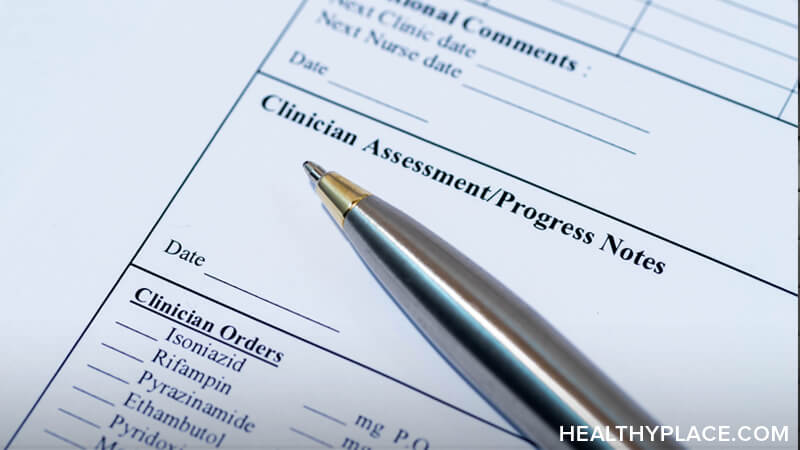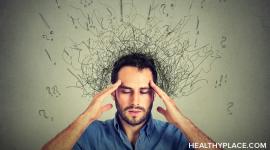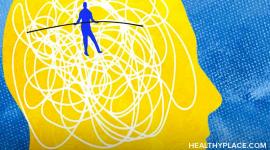How Is Schizophrenia Diagnosed? DSM-5 Diagnosis Criteria

Schizophrenia is a serious mental illness that deeply affects people. Because a correct schizophrenia diagnosis can improve someone’s quality of life, it’s important that it be made as soon as possible after the symptoms of schizophrenia appear.
Currently, no tests can provide a schizophrenia diagnosis. To determine whether someone has the disorder, doctors follow established criteria for a schizophrenia diagnosis.
Criteria for Schizophrenia Diagnosis in DSM-5
The Diagnostic and Statistical Manual of Mental Disorders, Fifth Edition (DSM-5) is the authority on mental illness. Created and published by the American Psychiatric Association, this comprehensive manual describes all known mental disorders, among them schizophrenia.
Mental health professionals use the DSM-5 when determining what someone is experiencing. Doctors use the information and analyze:
- diagnostic features and symptoms
- level of impairment
- duration of symptoms
- other conditions that share symptoms
They also look at age. While it’s not part of the diagnostic criteria, they do consider someone’s age. The typical age of schizophrenia diagnosis is between late adolescence and the mid-30s. This varies, though, with peak ages ranging from the early- to mid-20s for males and late-20s for females (Are Schizophrenia Symptoms in Males and Females Different?). Further, while it’s rare, schizophrenia can be diagnosed as early as childhood and as late as the 40s (What Are the Schizophrenia Symptoms in Children and Teens?).
Age provides a general idea of the likelihood that someone has schizophrenia. Schizophrenia won’t be the first consideration for a man in his 40s, for example. Beyond this, age isn’t a diagnostic criterion. Just what are the diagnostic criteria for schizophrenia?
Diagnosing Schizophrenia Using Symptoms and Features
Professionals use specific diagnostic features in the DSM-5 to help determine whether someone meets the criteria for schizophrenia. The DSM-5 delineates five main criteria. Paraphrased:
A. Two or more of
- Delusions
- Hallucinations
- Disorganized speech (such as speaking incoherently, losing track of thoughts)
- Disorganized or catatonic behavior
- Negative symptoms
B. Level of functioning has declined
C. The symptoms in Criterion A have persisted for at least 6 months
D. Schizoaffective disorder, major depression, and bipolar disorder have been ruled out
E. Substance use/abuse has been ruled out as a cause
In order for someone to be diagnosed with schizophrenia, he must experience a group of these symptoms and features. One or two are not enough.
To receive a schizophrenia diagnosis, someone can have any of the symptoms and features, but he must have the following:
- At least two symptoms from Criteria A
- One of those two must be delusions, hallucinations, or disorganized speech.
- These must have been present for at least one month.
The symptoms must impair one’s life and get in the way of her ability to work (or go to/participate in school), have positive relationships (or any relationships at all), and practice self-care. The problems in these areas must be new, a decline in the previous status.
Duration of the symptoms is also important for a schizophrenia diagnosis. Someone must have been experiencing steady symptoms for at least one month. Symptoms must be present some of the time for six consecutive months.
Other Considerations in Diagnosing Schizophrenia
The DSM-5 includes other things that can help determine schizophrenia. They’re not necessary diagnostic criteria, but their presence points to this serious mental illness.
- Prodromal (early) symptoms, similar to the symptoms of schizophrenia but too mild and sporadic for a diagnosis
- Inappropriate emotions (like loud, random laughter in public)
- Dysphoria (low mood)
- Anger
- Anxiety
- Phobias
- Sleep problems
- Lack of interest in or refusing food
- Memory problems
- Language/speech problems
- Shortened attention span
- Inability to understand someone’s intentions
- Thinking insignificant things are highly, personally meaningful
- Manic behavior
In addition to these, people with schizophrenia often experience what is known as neurological soft sign, subtle abnormalities that aren’t severe enough to fit into any disorder but are problematic and indicative of a bigger problem, like schizophrenia. They can include:
- Coordination problems
- Sensory-integration problems
- Left-right confusion
- Difficulty with complex movement
To diagnose schizophrenia, professionals examine all of the symptoms and features that are present (Complete List of Schizophrenia Symptoms). They also must look at what is not present.
Schizophrenia Diagnosis: Rule out Other Conditions
A diagnosis involves what someone is experiencing as well as what he is not. Some disorders have some features or symptoms that are shared with schizophrenia; therefore, doctors check to see if something else fits better than schizophrenia. Some of the conditions that, according to criteria in the DSM-5, have some similarities with schizophrenia are
- Mood disorders (depression and/or bipolar disorder) with psychotic features
- Schizophreniform
- Brief psychotic disorder
- Schizotypal personality disorder
- Obsessive-compulsive disorder
- Body dysmorphic disorder
- PTSD
- Autism spectrum disorder
- Communication disorders
- Substance use disorders
Schizophrenia is a complex disorder, and doctors take the diagnosis of it seriously. In addition to all of the above concerns, professionals also take into consideration the individual. Schizophrenia is unique, and each person experiences it differently. This makes perfect sense, of course, for no matter what their individualized symptoms, people with schizophrenia are above all, human.
APA Reference
Peterson, T.
(2021, December 17). How Is Schizophrenia Diagnosed? DSM-5 Diagnosis Criteria, HealthyPlace. Retrieved
on 2024, April 26 from https://www.healthyplace.com/thought-disorders/schizophrenia-symptoms/how-is-schizophrenia-diagnosed



